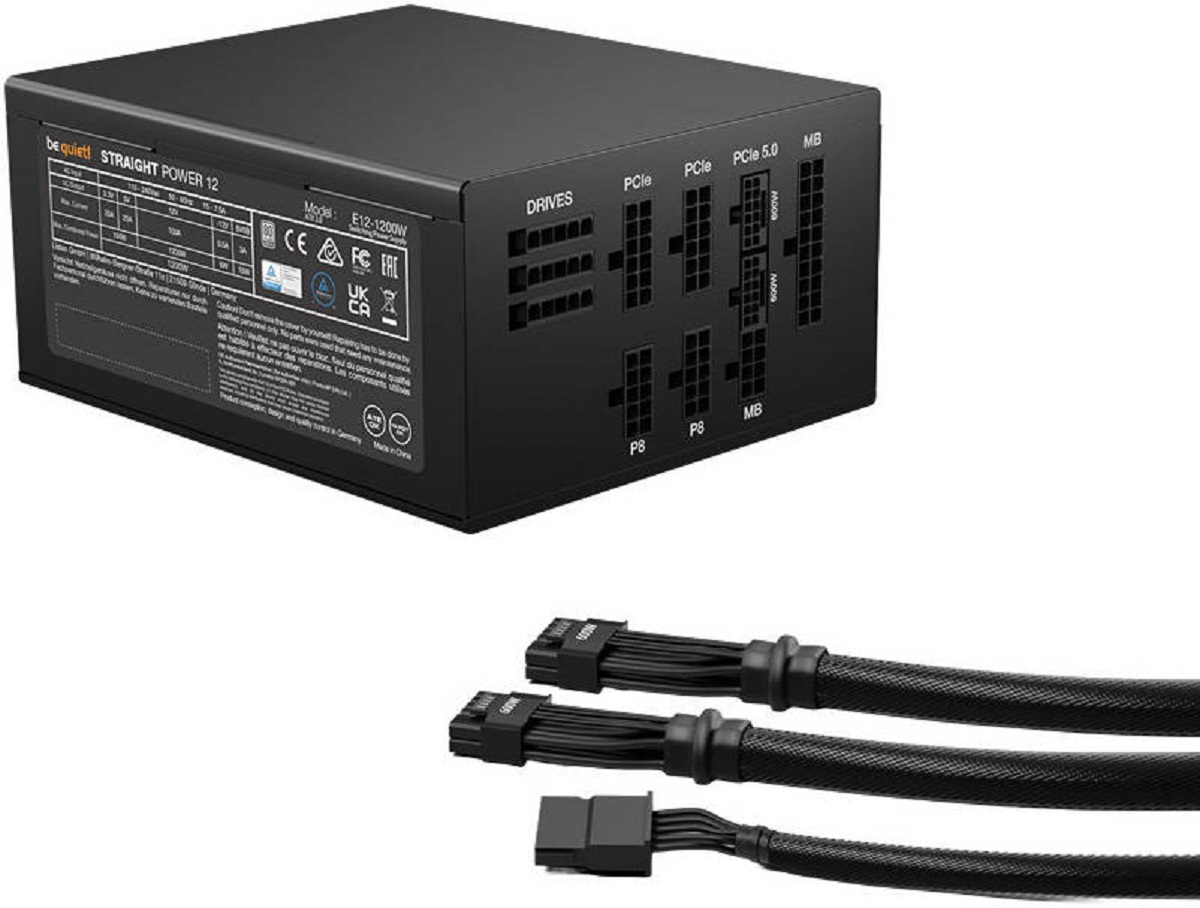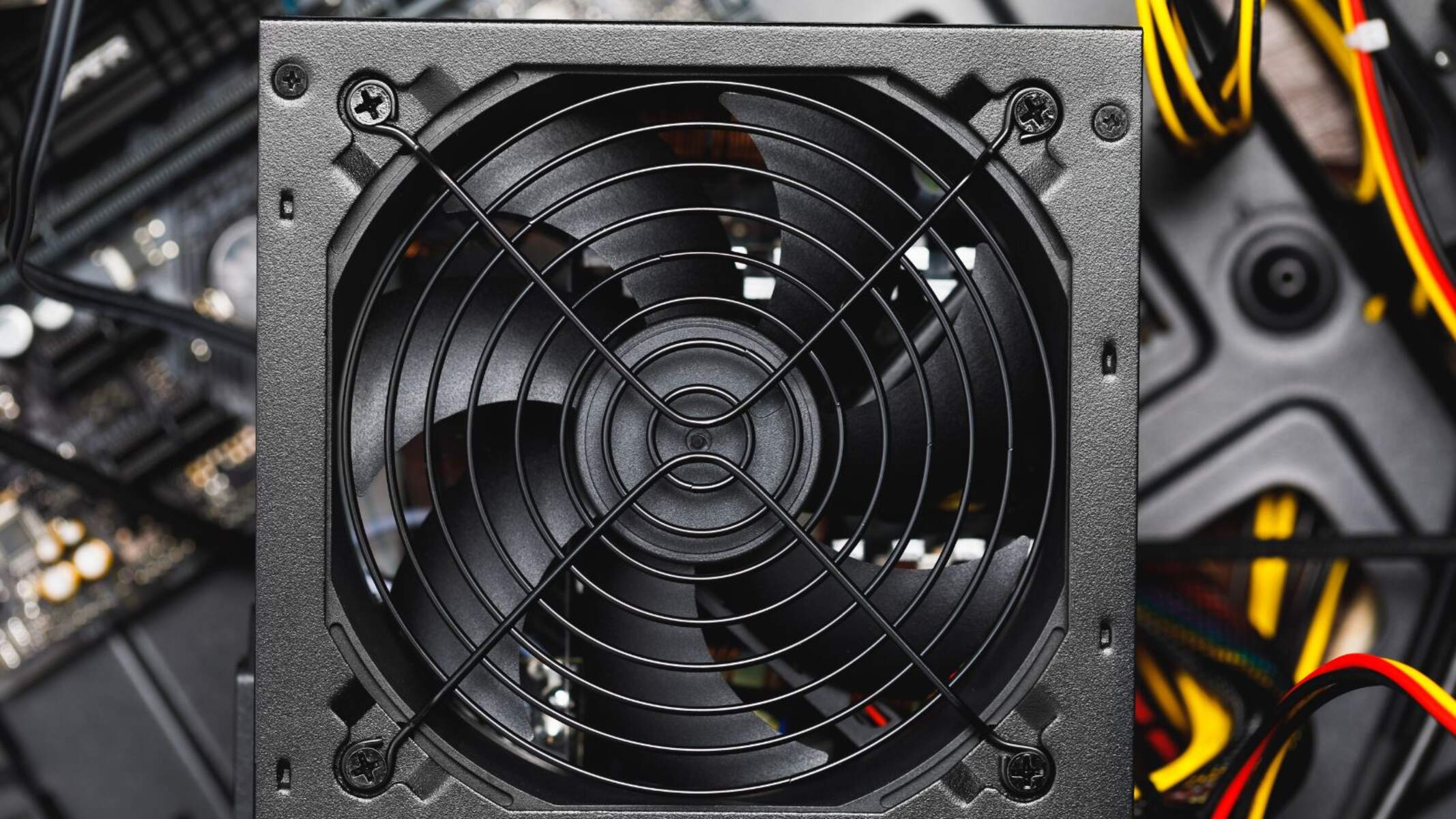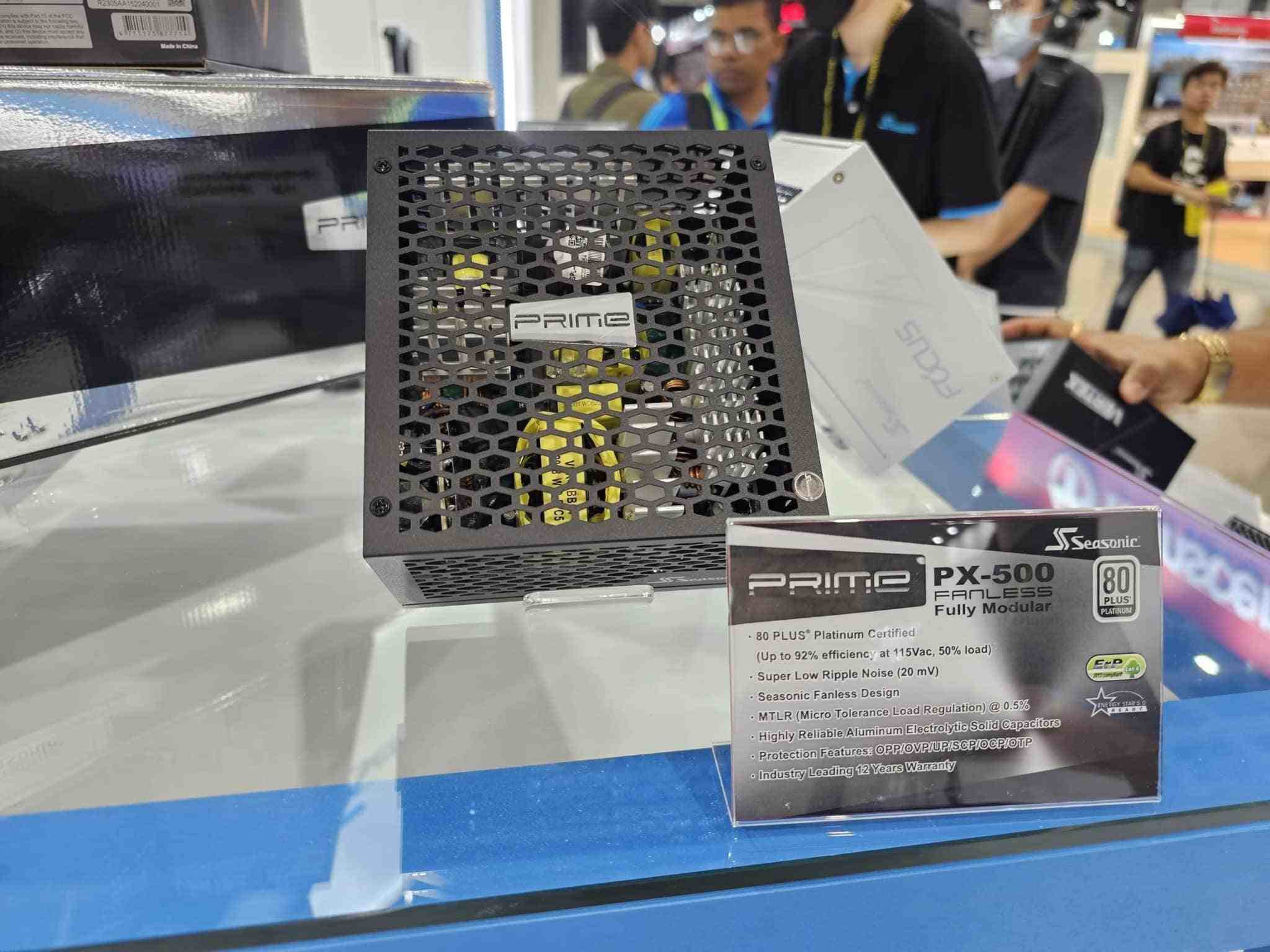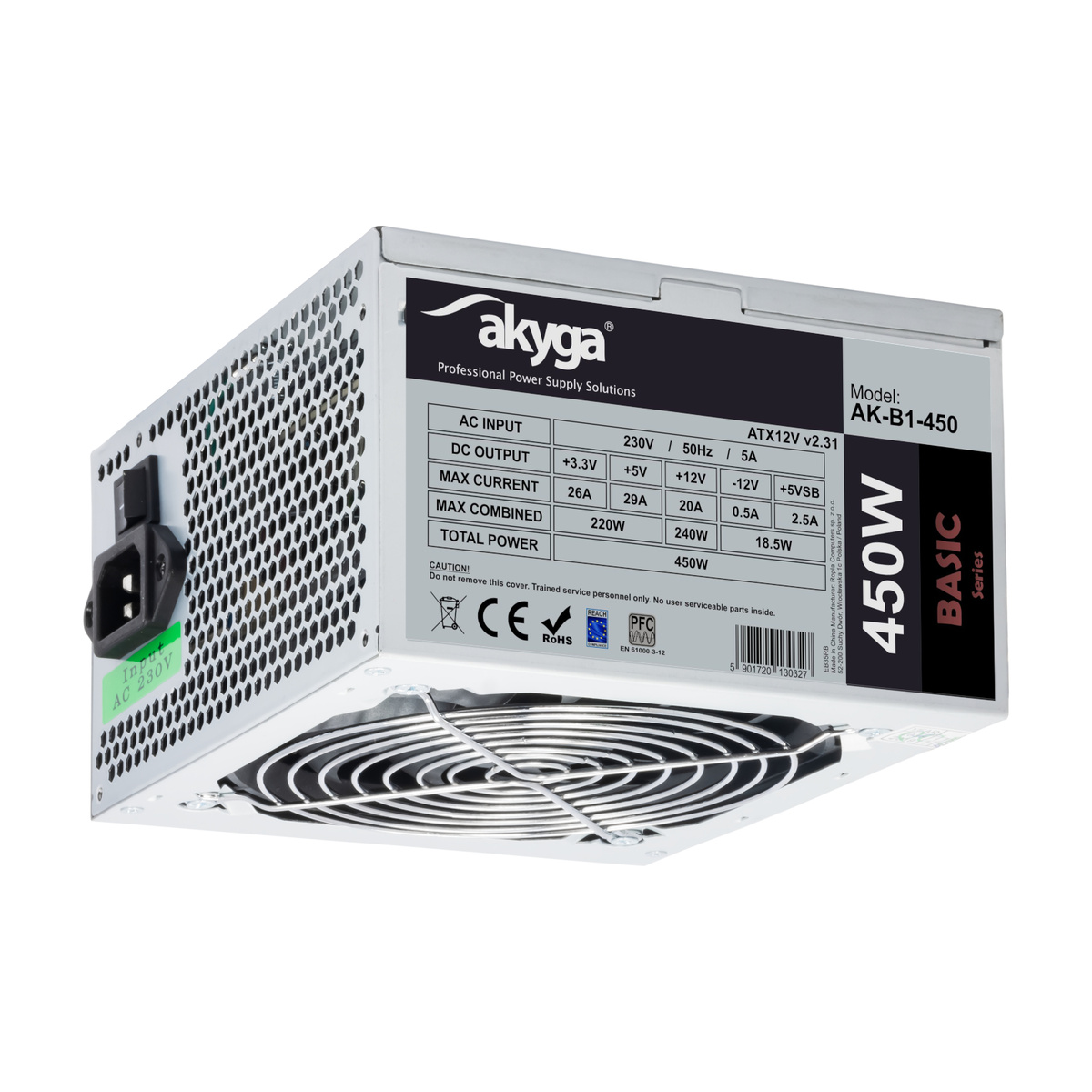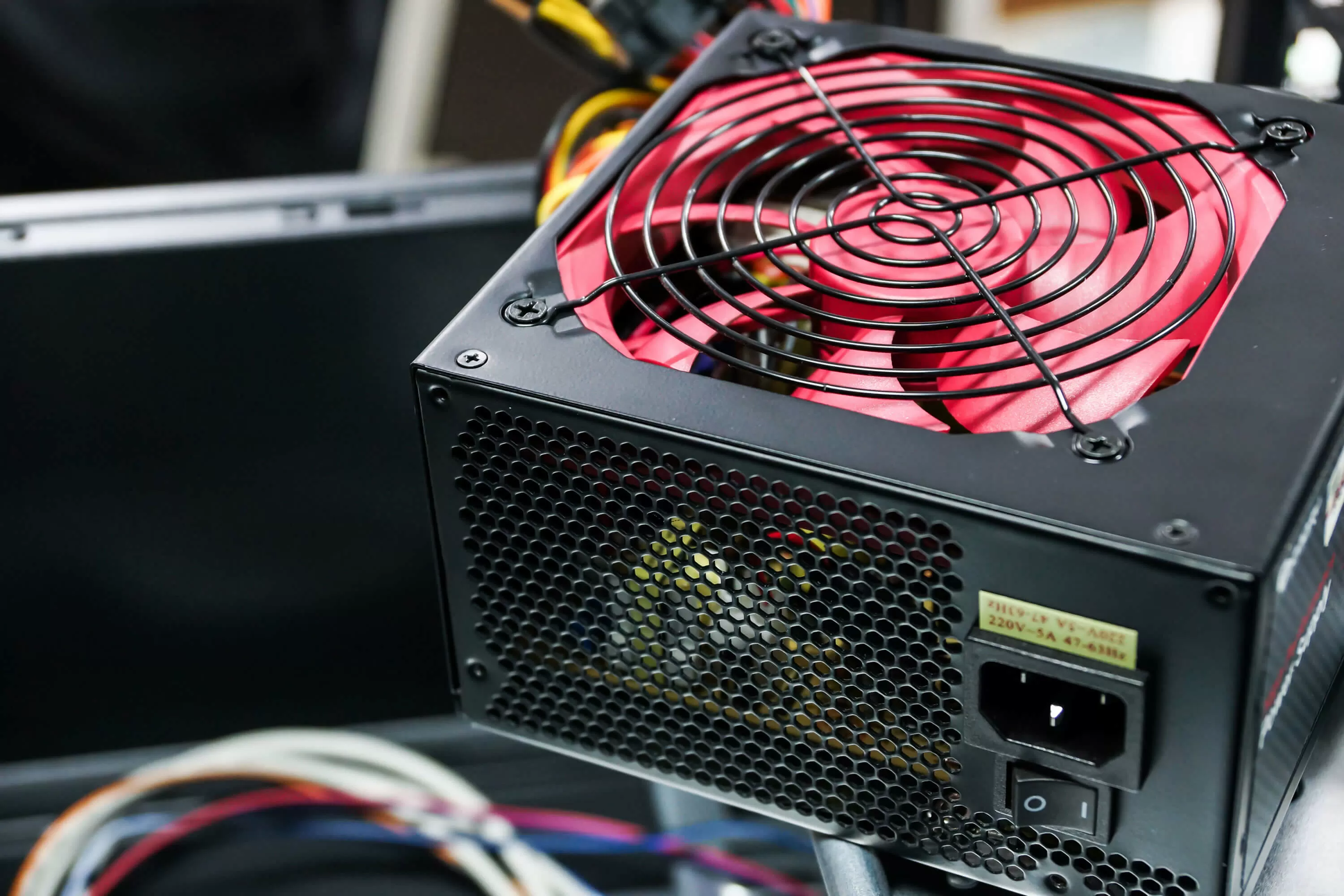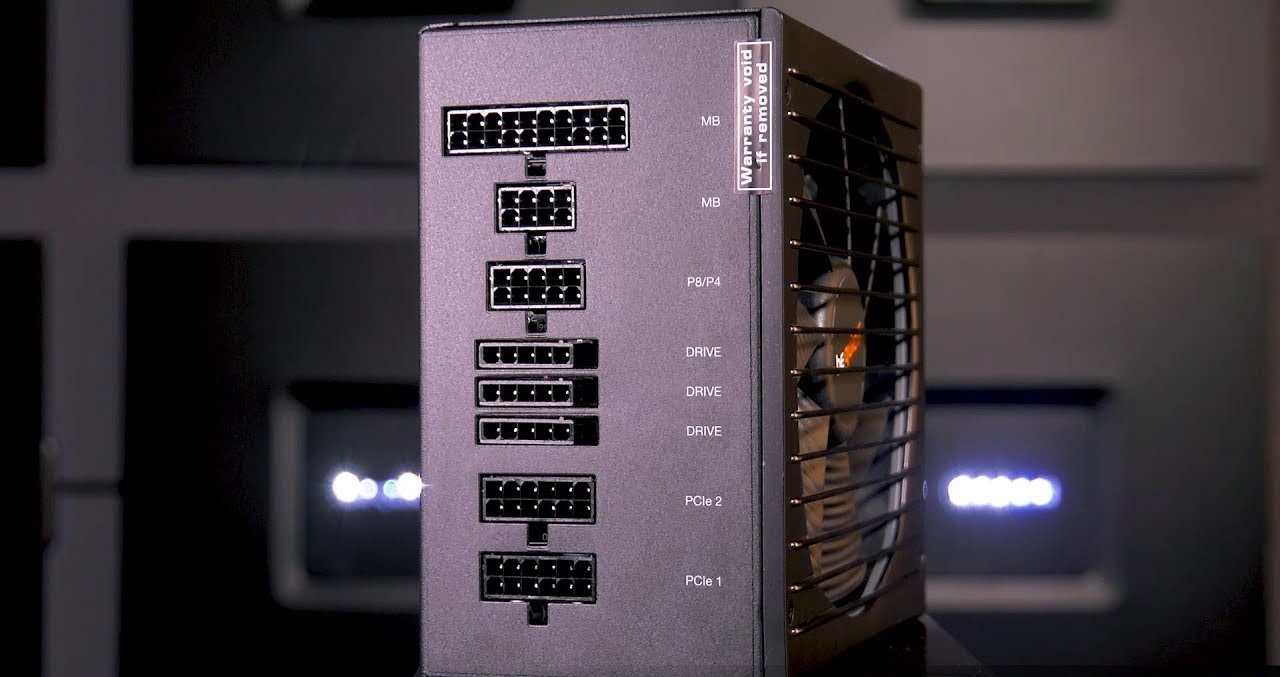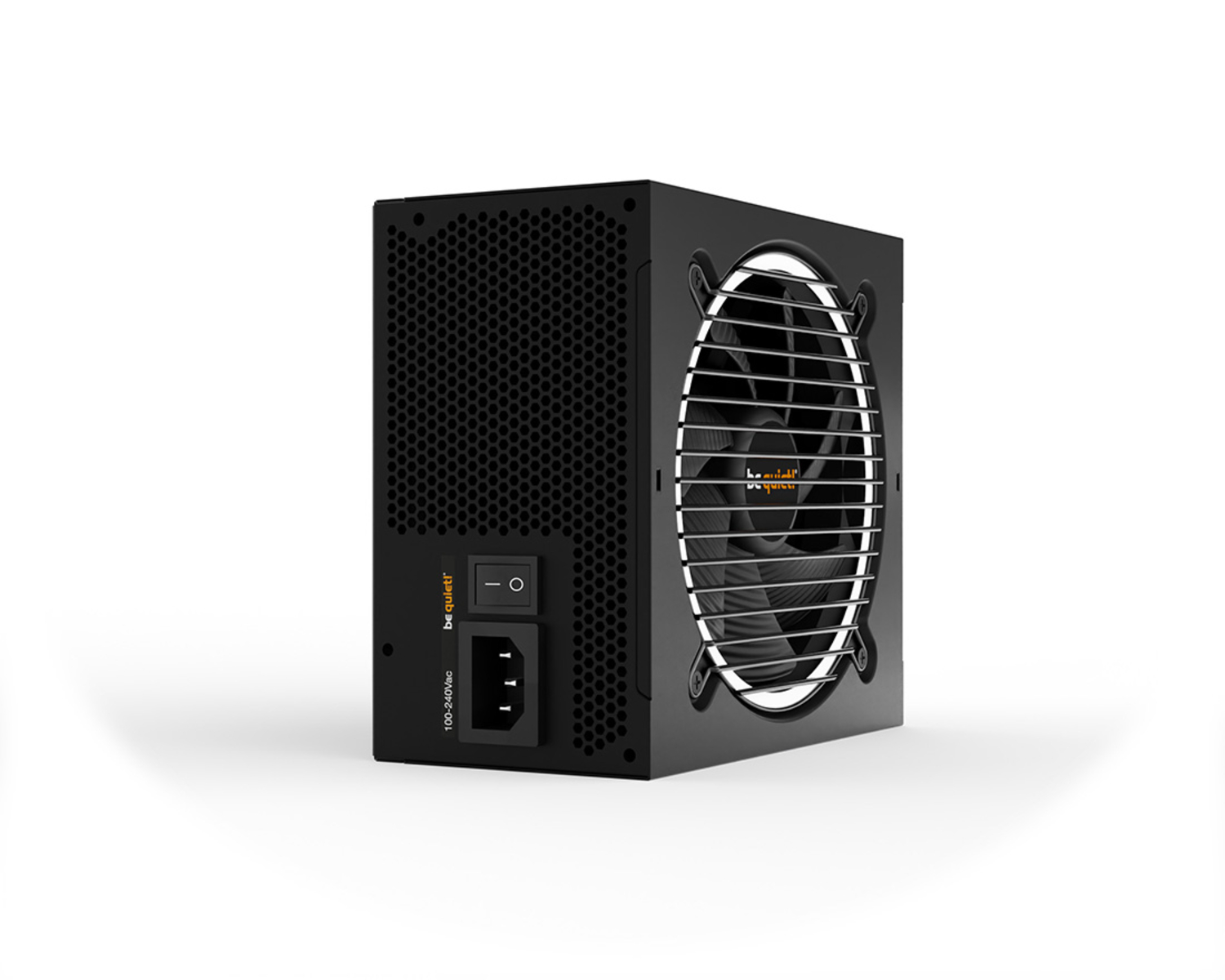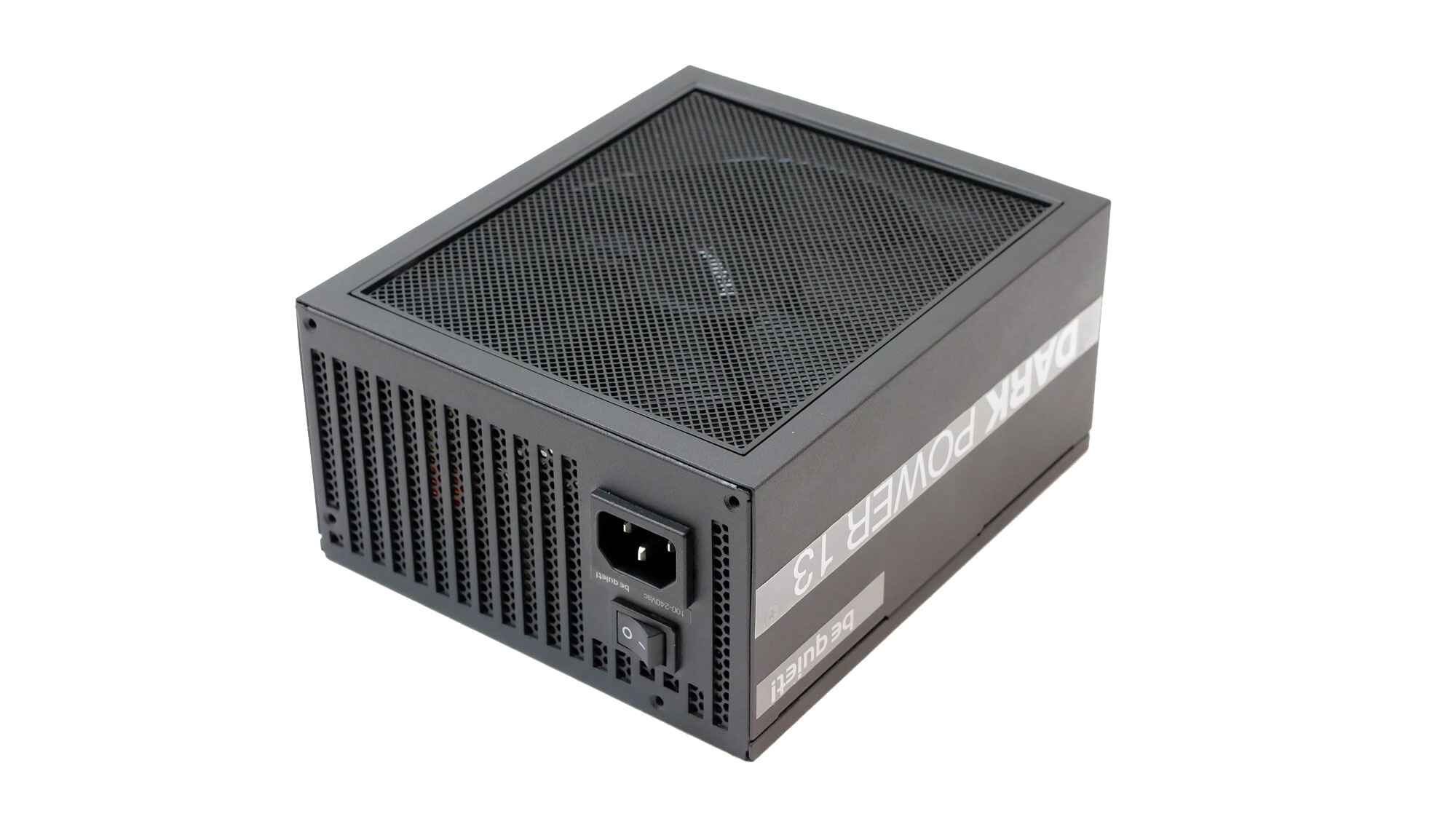Introduction
Welcome to the world of power supply units (PSUs)! These essential components are often overlooked but play a critical role in every computer system. The PSU is responsible for converting the alternating current (AC) from your wall outlet into direct current (DC) that your computer components can use.
When it comes to PSUs, one important aspect to consider is the 12V rail. The 12V rail provides power to various components such as the CPU, graphics card, and motherboard. Understanding the 12V rail and its capabilities is crucial for ensuring stable and efficient power delivery to your computer system.
In this article, we will explore the basics of the 12V rail in PSUs and how it impacts your computer’s performance. We will discuss the different types of PSUs available in the market, including single and multiple rail configurations. Additionally, we will examine how to recognize and identify the 12V rail in a PSU by checking the manufacturer’s specifications and analyzing the PSU’s label. Let’s dive in!
What is a PSU?
A power supply unit (PSU) is a crucial component of any computer system. As the name suggests, its primary function is to supply power to the various components of the computer, ensuring their proper functioning. It takes the incoming electrical energy from the mains power supply and converts it into the appropriate voltage levels required by the computer’s internal components.
The PSU is responsible for converting the alternating current (AC) from the wall outlet into direct current (DC) that the computer components can use. The DC power is then distributed to different parts of the computer, including the motherboard, processor, graphics card, storage devices, and peripherals.
PSUs come in various sizes, from standard ATX units for desktop computers to smaller form factors for laptops and other compact devices. They can vary in capacity, measured in watts, to accommodate the power demands of different computer systems. Higher-end gaming rigs or workstations may require PSUs with greater wattage capabilities to meet the power requirements of power-hungry components.
In addition to delivering the necessary power, modern PSUs also provide essential safety features. They incorporate various protective mechanisms such as overvoltage protection, undervoltage protection, overcurrent protection, and short circuit protection to safeguard the computer components from electrical damage. These features help ensure the stability and longevity of the entire system.
Overall, the PSU is a critical component that directly impacts the reliability, stability, and performance of your computer system. Choosing a high-quality PSU with sufficient wattage and the necessary safety features is vital to maintaining the health of your computer and avoiding potential issues such as system crashes or component failures.
Importance of the 12V Rail
Within a power supply unit (PSU), the 12V rail is a crucial component that plays a significant role in powering your computer system. The 12V rail refers to a dedicated power delivery channel that provides electrical power to key components such as the CPU, graphics card, and motherboard. Understanding the importance of the 12V rail is essential for building a stable and efficient computer system.
Modern computer systems, especially those used for gaming or graphic-intensive tasks, require a considerable amount of power to operate. The 12V rail is responsible for delivering a significant portion of this power, as the CPU and graphics card, in particular, have high power demands. These components require stable and efficient power delivery to ensure optimal performance and prevent issues such as system crashes or instability.
The 12V rail is especially critical for gaming systems or workstations that utilize high-performance graphics cards. These graphics cards consume a substantial amount of power to drive demanding tasks such as rendering complex 3D graphics or processing large datasets. Insufficient power delivery to the graphics card can lead to performance degradation, artifacting, or even system shutdowns under heavy usage.
In addition to the graphics card, the CPU also relies heavily on the 12V rail for power. The processor is the brain of the computer, handling the majority of the computational tasks. A stable and efficient power supply to the CPU ensures optimal performance and prevents issues such as system freezes or crashes during demanding tasks like video editing, rendering, or gaming.
Furthermore, the stability of the 12V rail directly affects the overall stability of the computer system. Fluctuations or inconsistencies in the power supply can cause voltage drops or spikes, which can disrupt the functioning of various components and lead to system instability. This can manifest as random crashes, freezing, or even component damage in severe cases.
Overall, the 12V rail plays a critical role in ensuring the smooth and reliable operation of your computer system, particularly when it comes to power-hungry components like the CPU and graphics card. Choosing a PSU with a robust 12V rail capable of delivering sufficient power and maintaining stable voltage levels is vital for building a high-performance and stable computer system.
Types of PSUs
When it comes to power supply units (PSUs), there are different types available in the market, each with its own characteristics and benefits. It’s important to understand these PSU types to make an informed decision when choosing the right power supply for your computer system.
1. Standard ATX PSU: The most common type of PSU found in desktop computers is the standard ATX (Advanced Technology Extended) PSU. These PSUs follow the ATX form factor and are compatible with most modern motherboards. They come in various wattage capacities to suit different system requirements and typically offer a good balance of performance, efficiency, and affordability.
2. SFX/SFX-L PSU: SFX (Small Form Factor) and SFX-L PSUs are designed for compact systems such as mini-ITX or small form factor (SFF) builds. These PSUs are smaller in size compared to standard ATX PSUs, allowing them to fit into tight spaces. SFX-L PSUs, in particular, offer higher power capacities while still maintaining a compact form factor.
3. TFX PSU: TFX (Thin Form Factor) PSUs are primarily used in slim desktop cases or slimline laptops. These PSUs are even smaller than SFX PSUs and are tailored to fit compact systems with limited space. While TFX PSUs provide lower power capacities compared to standard ATX PSUs, they are suitable for low-power systems or office computers.
4. Modular PSU: Modular PSUs offer a higher level of flexibility and cable management. These PSUs allow you to detach and connect cables as needed, minimizing cable clutter inside the chassis. This feature not only improves airflow and aesthetics but also makes installation and maintenance easier.
5. Semi-Modular PSU: Semi-modular PSUs combine the benefits of modular and non-modular PSUs. While some cables are permanently attached, key cables like the 24-pin ATX power connector and CPU power connector still offer modular functionality. Semi-modular PSUs strike a balance between convenience and cost-effectiveness.
6. Fully-Modular PSU: Fully-modular PSUs provide the highest level of customization and cable management. These PSUs offer full modularity, allowing you to connect only the cables you need, eliminating unused cables altogether. This level of customization is beneficial for enthusiasts and those seeking maximum cable management capabilities but comes at a higher price point.
Each PSU type offers its unique advantages, and the choice will depend on factors such as your system requirements, budget, available space, and preference for cable management. Understanding the different PSU types allows you to select the most suitable power supply for your computer build, ensuring optimal performance, efficiency, and overall satisfaction.
Single Rail PSU
A single rail PSU, as the name suggests, utilizes a single 12V rail to deliver power to all the components in a computer system. In this configuration, the entire power supply’s output capacity is available on a single rail, providing a straightforward and simplified power delivery mechanism.
One of the key advantages of a single rail PSU is its ability to deliver a high amount of power to power-hungry components. Since the entire power supply’s capacity is concentrated in a single rail, it can provide a significant amount of current to the components connected to it. This is particularly beneficial for systems with high-performance processors, graphics cards, and other power-intensive devices.
Moreover, with a single rail PSU, you don’t have to worry about distributing power across multiple rails or balancing power consumption between them. This makes installation and cable management easier since you only need to connect the components to a single rail.
Another advantage of a single rail PSU is that it can provide consistent power to all components in the system. Since all the power is coming from a single source, there is no need to worry about load imbalances or potential issues caused by uneven power distribution. This can contribute to a more stable and reliable system, especially during demanding tasks or overclocking scenarios.
However, it’s worth noting that there are certain considerations when using a single rail PSU. One potential concern is the risk of overloading. Since all components draw power from a single rail, there is a higher chance of exceeding the rail’s maximum power limit if you have multiple power-hungry devices connected.
Furthermore, in the event of a short circuit or overload on a specific component, the entire system may experience a shutdown or power interruption. This is because the single rail is responsible for delivering power to all the components, and any issue can affect the entire system.
Overall, a single rail PSU can be an excellent choice for those who need to power high-performance systems with demanding components. It offers a straightforward and efficient power delivery mechanism, making cable management easier and providing consistent power to all connected devices. However, it’s important to be mindful of power consumption and potential risks of overloading when using a single rail PSU.
Multiple Rail PSU
A multiple rail PSU, also known as a multi-rail PSU, uses multiple 12V rails to distribute power to different components in a computer system. Each rail is designed to handle a specific set of components or peripherals, providing separate power outputs for increased power delivery and protection.
One of the main benefits of a multiple rail PSU is improved power distribution and load balancing. By dividing the power output across multiple rails, the PSU can effectively allocate power to different components, reducing the risk of overloading a single rail. This ensures that each component receives the necessary power without compromising stability or performance.
Another advantage of a multiple rail PSU is enhanced protection against short circuits and overloads. Each rail is typically equipped with its own set of protective mechanisms, such as overcurrent protection (OCP), which can prevent excessive current from damaging the components connected to that specific rail. This helps isolate and contain any issues, minimizing the impact on the rest of the system.
Additionally, multiple rail PSUs offer increased safety by isolating different sets of components. In the event of a short circuit or failure in one rail, the other rails can continue to deliver power to the remaining components, reducing the potential for a complete system shutdown. This can be particularly beneficial in critical systems or setups where high availability is essential.
Furthermore, multiple rail PSUs can offer better cable management options. Since the power is distributed across different rails, you can connect components to the rails that are most suitable for their power requirements. This can result in neater cable routing and improved airflow within the computer case, which in turn can help maintain optimal temperatures and reduce the risk of components overheating.
However, it’s important to note that the use of multiple rails in a PSU also comes with certain considerations. One such consideration is the need to ensure proper load balancing between the rails. It’s crucial to distribute the power consumption evenly across the rails to avoid overburdening a specific rail while leaving others underutilized. This can be managed by planning the connection of power-hungry components and peripherals across the available rails.
Overall, a multiple rail PSU provides improved power distribution, load balancing, and protection for your computer system. It offers enhanced safety features, efficient power management, and the ability to connect and power different components separately. When properly utilized, a multiple rail PSU can contribute to a stable, reliable, and high-performance computing experience.
Recognizing the 12V Rail
Identifying and understanding the 12V rail in a power supply unit (PSU) is crucial for ensuring optimal power delivery to your computer components. Recognizing the 12V rail can be done by checking the manufacturer’s specifications, analyzing the PSU’s label, and understanding the ampere ratings of the PSU.
The first step in recognizing the 12V rail is to review the manufacturer’s specifications. Most reputable PSU manufacturers provide detailed information about their products, including the number of 12V rails and their respective ampere ratings. Look for specifications that explicitly mention the number of 12V rails or the configuration of the PSU.
In addition to the specifications, the PSU label also provides valuable information about its 12V rail configuration. The label is usually located on the side or top of the PSU and contains information about its electrical characteristics. Look for labels that indicate the presence of multiple 12V rails or provide ampere ratings for each rail.
Furthermore, the ampere ratings or current limits associated with each rail can provide insight into the 12V rail configuration of the PSU. Each rail has a maximum current or ampere rating it can deliver. For instance, if a PSU has a 12V rail with an ampere rating of 30A and another 12V rail with an ampere rating of 20A, it indicates a multiple rail configuration.
Another helpful indicator is the presence of dedicated connectors for specific components. Some PSUs have separate connectors for the CPU, graphics card, or peripherals, which can suggest the existence of multiple 12V rails. A PSU with dedicated CPU and graphics card connectors often employs multiple rails to distribute power to these high-demand components.
To ensure accuracy and safety, it is recommended to verify the 12V rail configuration through reliable sources, such as the PSU manufacturer’s website or reputable reviews. These sources can provide detailed information and clarification on the specific PSU model you are considering.
Understanding and recognizing the 12V rail in a PSU is essential for selecting a power supply that can meet the power requirements of your computer system. Whether it is a single rail PSU or a multiple rail PSU, ensuring proper power delivery is crucial for stable and reliable performance of your components.
Checking the Manufacturer’s Specifications
When it comes to determining the 12V rail configuration of a power supply unit (PSU), one reliable source of information is the manufacturer’s specifications. These specifications provide detailed information about the PSU’s electrical characteristics, including the number of 12V rails, their ampere ratings, and other relevant details.
Before purchasing a PSU, it is important to research and review the manufacturer’s specifications to ensure that it meets the power requirements of your computer system. Here are some steps to follow when checking the manufacturer’s specifications:
1. Visit the Manufacturer’s Website: Start by visiting the website of the PSU manufacturer. Most reputable manufacturers provide comprehensive information about their products, including detailed specifications. Look for a section dedicated to the PSU models to find the specifications of the specific model you are interested in.
2. Identify the PSU Model: Locate the specific model or series of the PSU you are considering. Manufacturers often categorize their PSUs based on wattage, series, or specific features. It is important to ensure that you are viewing the specifications of the correct model to get accurate information.
3. Look for 12V Rail Configuration: Once you have located the PSU model, search for information about the 12V rail configuration. The specifications should indicate whether the PSU has a single rail or multiple rails. If multiple rails are present, it should specify their ampere ratings and how the power is divided across them.
4. Check Ampere Ratings: Pay attention to the ampere ratings mentioned for each 12V rail. These ratings determine the maximum power that each rail can deliver. Ensure that the ampere ratings are suitable for powering the components in your system, especially power-hungry devices such as the CPU and graphics card.
5. Consider Wattage and Efficiency: While focusing on the 12V rail configuration, also take into account the overall wattage and efficiency of the PSU. Ensure that the wattage capacity is sufficient to power all the components in your system, accounting for future upgrades as well. Additionally, higher efficiency ratings indicate better power conversion and can result in lower energy consumption and reduced heat generation. Look for PSUs with 80 Plus certification that signifies high efficiency levels.
6. Consult Reliable Sources: In addition to the manufacturer’s specifications, it is a good practice to consult reliable sources such as reputable reviews or technical forums. These sources can provide additional insights and real-world experiences with the specific PSU model you are considering.
By checking the manufacturer’s specifications, you can gather vital information about the 12V rail configuration of a PSU. This, in turn, helps you select a power supply that meets the power demands of your computer system and ensures stable and reliable performance for all your components.
Analyzing the PSU’s Label
One of the key sources of information for understanding the 12V rail configuration of a power supply unit (PSU) is the label affixed to the PSU itself. This label contains important details about the electrical characteristics of the PSU, including the 12V rail configuration, ampere ratings, and other relevant specifications.
When analyzing the PSU’s label, there are several key elements to focus on:
1. 12V Rail Information: Look for indications on the label that specify the presence of multiple 12V rails. The label may mention the number of 12V rails explicitly, or it may express this information indirectly by listing ampere ratings for different rails.
2. Ampere Ratings: The ampere ratings associated with each 12V rail are crucial for understanding the power delivery capabilities of the PSU. These ratings indicate the maximum current that each rail can provide, which affects the power distribution to your components. A PSU label with separate ampere ratings for different rails signifies a multiple rail configuration.
3. Dedicated Connectors: Pay attention to any mention of dedicated connectors for specific components, such as the CPU or graphics card. Some PSUs provide separate connectors for these power-hungry components, which can be an indication of multiple 12V rails used to supply power to these devices.
4. Safety Certifications: The PSU label may also include information about safety certifications, such as UL (Underwriters Laboratories) or CE (Conformité Européene). These certifications validate that the PSU meets safety and quality standards, ensuring reliable and safe operation.
5. Efficiency Ratings: Look for efficiency ratings, typically displayed as an 80 Plus certification. This rating indicates the efficiency of the PSU in converting AC power to DC power. A higher efficiency rating signifies better power conversion and reduced energy waste, making the PSU more environmentally friendly and energy-efficient.
6. Model and Manufacturer Information: The PSU label should also provide details about the model name or number and the manufacturer. This information is useful for researching the specific PSU model and accessing additional documentation or support from the manufacturer.
When analyzing the PSU’s label, it’s important to cross-reference the information available with reliable sources. In some cases, manufacturers may provide supplemental documentation or online resources that offer more detailed specifications for their PSUs.
By carefully analyzing the label, you can gather valuable insights into the 12V rail configuration, ampere ratings, safety certifications, and efficiency of the PSU. This information is crucial for selecting a power supply that can meet the power requirements of your computer system while ensuring stable and reliable performance.
Understanding Ampere Ratings
When it comes to power supply units (PSUs), understanding ampere ratings is crucial for determining the power delivery capabilities of the unit and ensuring that it meets the requirements of your computer system. Ampere ratings, often expressed in amps (A) or milliamps (mA), indicate the maximum current that a PSU can provide on a specific rail or connector.
Here are some key points to consider for a better understanding of ampere ratings:
1. Power Distribution: Ampere ratings help determine how the power is distributed among the various components connected to the PSU. The sum of the ampere ratings for all the rails should not exceed the PSU’s maximum power delivery capacity. For example, if a PSU has a 12V rail with an ampere rating of 20A, it means that it can provide a maximum of 20A of current to the components connected to that rail.
2. Power Requirements: Different computer components have varying power consumption needs. The ampere ratings of the PSU should exceed the requirements of the individual components. For example, a powerful graphics card may require a higher ampere rating to meet its power demands, while other components like storage devices or peripherals may require lower ampere ratings.
3. Multiple Rails: In PSUs with multiple rails, it is essential to understand how the ampere ratings are allocated among the different rails. Each rail may have its own ampere rating, indicating the maximum current it can deliver. It is vital to balance the power distribution across the rails to prevent overloading any single rail and ensure the stable operation of the entire system.
4. Importance of Efficiency: Higher efficiency PSUs tend to convert electrical energy more efficiently, resulting in reduced power wastage and lower heat generation. This means that PSUs with higher efficiency ratings can deliver more of the available current to the components, even if the ampere ratings are similar to those of less efficient PSUs.
5. Safety Considerations: It’s crucial to select a PSU that can safely deliver the required power without overloading any components or exceeding the PSU’s ampere ratings. Operating a PSU beyond its rated ampere ratings can lead to overheating, instability, and potential damage to the PSU and connected components. It’s important to ensure that the PSU has sufficient ampere ratings to meet the needs of your system.
Understanding ampere ratings is essential for selecting a PSU that can provide adequate power to your computer system. Ensure that the PSU’s ampere ratings align with the power requirements of your components, achieve a balanced power distribution among multiple rails, and prioritize safety considerations to maintain stable and reliable system performance.
Conclusion
Choosing the right power supply unit (PSU) is crucial for ensuring stable and efficient power delivery to your computer system. Understanding the 12V rail in a PSU and its importance in powering key components such as the CPU, graphics card, and motherboard is essential for optimal performance.
In this article, we explored the different types of PSUs available, including single rail and multiple rail configurations. Single rail PSUs offer simplified power delivery and high power output, making them suitable for power-hungry systems. On the other hand, multiple rail PSUs provide enhanced power distribution, load balancing, and protection for critical components.
We discussed how to recognize the 12V rail by checking the manufacturer’s specifications and analyzing the PSU’s label. The manufacturer’s specifications can provide valuable information about the 12V rail configuration, while the PSU label contains details such as ampere ratings, dedicated connectors, and safety certifications.
Ampere ratings were another important aspect to understand, as they determine the maximum current that a PSU can provide. Properly balancing power distribution across the rails and ensuring that the ampere ratings meet the power requirements of the components are vital for stable and reliable system performance.
By considering these factors and conducting thorough research, you can choose a PSU that is suited to your system’s power demands. Whether you opt for a single rail PSU or a multiple rail PSU, it’s crucial to select a high-quality PSU from reputable manufacturers to ensure efficiency, safety, and longevity.
Remember to consult reliable sources, such as manufacturer specifications, PSU labels, and reputable reviews, to gather accurate information about the PSU you are considering. Taking the time to select an appropriate PSU will contribute to the overall stability, performance, and longevity of your computer system.







